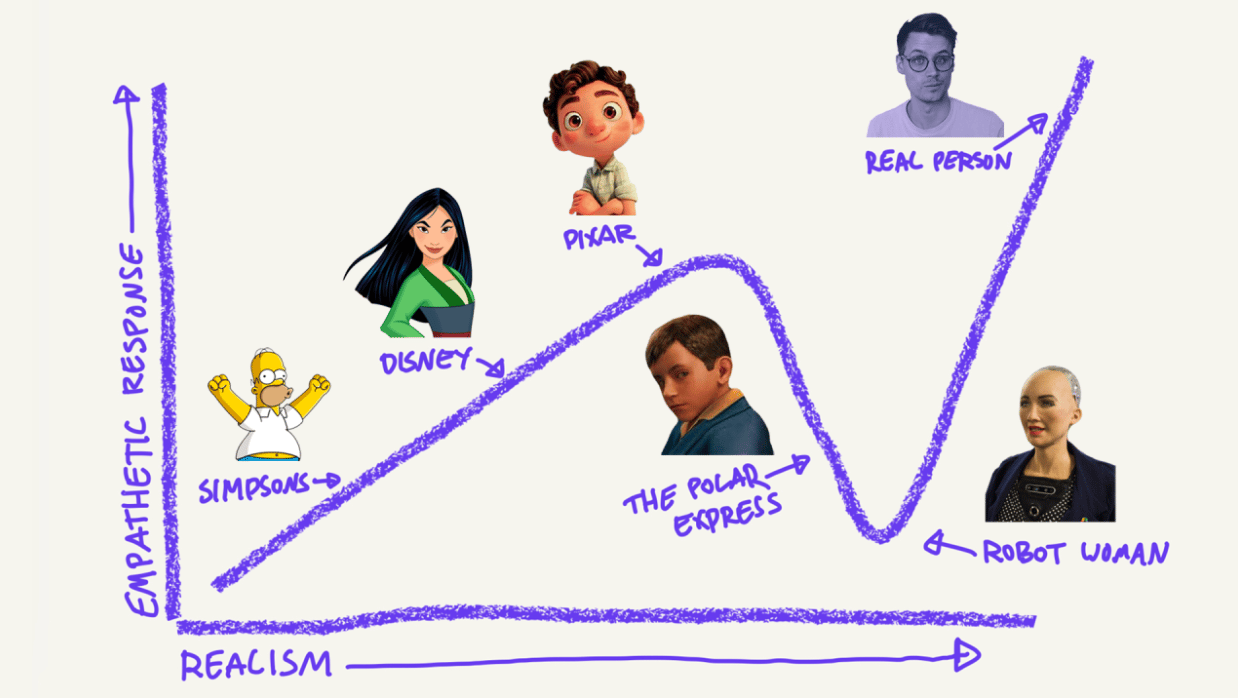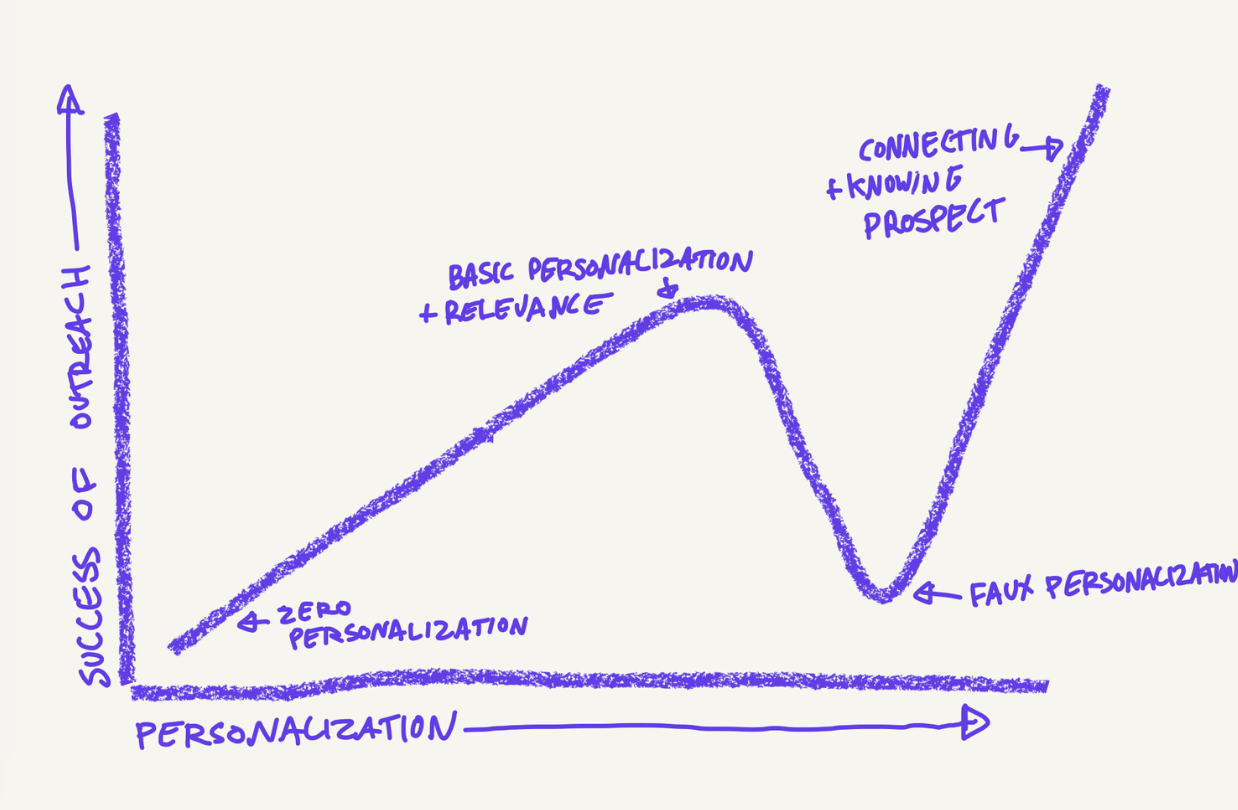- Warm Revenue
- Posts
- The Uncanny Valley of Personalization
The Uncanny Valley of Personalization
“Hey {First Name}” isn’t personalization - it's lazy sales
“Hey Mac, saw you went to Drexel—Go Dragons! Anyway, wanna buy my software?”
If I had a dollar for every email like this, I wouldn’t be running Commsor… I’d be building Jurassic Park. 🦖
(Also I only attended Drexel for half a semester before dropping out anyways, but that’s a story for another time.)
Bad personalization isn’t just bland and ineffective - it’s actively killing your outreach.
And the worst part? Most sellers don’t even realize they’re stuck in the uncanny valley of personalization where emails feel just weird enough to make prospects cringe.
Today, we’re breaking down:
✅ Why most “personalized” sales emails backfire
✅ Three dead giveaways that your personalization is working against you
✅ How to craft outreach that feels personal — without forcing it
✅ A smarter way to build instant credibility

The Uncanny Valley of Personalization: What It Is and Why It Happens
The uncanny valley is what happens when robots try to act human and just make everyone uncomfortable. Like when the Pirates of the Caribbean animatronics at Disneyland turn their heads just enough to make you question your safety.
Stiff movements. Lifeless eyes. Something’s off.

In sales, our own uncanny valley has developed. And new tech made it 100x worse. The rise of AI and automation has flooded inboxes with sales emails that feel personal but aren’t.
📩 “You’re in {Industry} - so you’ll love our product!”
📩 “Great post - here’s my generic pitch!”
📩 “Big fan of your work - now buy this!”
Instead of feeling genuine, these emails feel like a bad AI deepfake.
That’s the uncanny valley of personalization. It’s the gap between true relationship-building and surface-level, data-scraped attempts to sound personal.
And just like unsettling animatronics, it makes people instinctively pull back, even if they don’t exactly know why. Something just feels off.

3 Signs of Robotic Personalization
Here are three dead giveaways that your personalization is working against you:
1. It’s Personal, But Not Relevant
Referencing a buyer’s alma mater, recent post, or shared connection feels personal on the surface - but if it doesn’t tie back to your reason for reaching out, it’s just noise.
Just the other day, I got an email that opened with a dinosaur joke. Nice touch, but…. then they tried to sell me something for e-commerce companies.
Swing and miss.
2. It’s Clearly Automated
If your email reads like it was pulled straight from a template with dynamic fields, buyers will assume the same level of effort went into the rest of your pitch.
Yes, I know you “loved my latest post” and think I’m “doing incredible work in the industry.”
So does every other prospect getting this email.
3. It Tries Too Hard
Over-personalization can be just as bad as none at all. When a message goes overboard on unnecessary details (“Saw you ran a half marathon in 2019, impressive!”), it feels forced.
If your personalization reads like a fan letter instead of a sales email, it’s time to dial it back.

How to Make Personalization Feel… Well, Personal
Here’s the plot twist:
The best personalization doesn’t feel like personalization at all. It feels like a natural, relevant, and thoughtful message, because it is.
Ready to make sure your outreach hits the mark?
1. Start with Relevance, Not Just Info
✅ “I saw your team just raised a Series B and is scaling outbound. I work with companies at your stage to help them build warm pipeline - wanted to share a playbook that’s been working.”
❌ “Hey [First Name], I saw you went to [University]—go [Mascot]! Anyway, I wanted to see if you’re open to a chat…”
The difference? One ties personalization directly to a business need. The other feels like forced small talk with an agenda.
2. Show You Understand Their Priorities
Before you send that email, ask yourself:
What’s happening in their company / industry right now?
What challenges are they likely facing based on their role?
How does my outreach help them specifically?
If you can’t answer these, you’re not personalizing.
You’re just decorating an email.
3. Skip the Fluff, Lead With Value
You don’t need an elaborate icebreaker. Just a strong, relevant reason to reach out.
✅ “You just posted about ramping your outbound team - this article on warm intros might be helpful.”
❌ “I saw you liked a post about GTM strategies. That reminded me of our platform, which optimizes GTM strategies.”
4. And Lastly, Make Sure You Pass…
The Personalization Test
Would I say this in a real conversation?
Does this connect to something the buyer actually cares about?
Does this make my outreach more relevant, or just longer?

Or Just Skip Personalization Altogether
Want to avoid the uncanny valley of personalization 100% of the time?
Get a warm intro.
When your name comes from a trusted connection, you don’t need to prove you’ve done your homework - credibility is built in.
No scraping LinkedIn for fun facts.
No awkward small talk about a prospect’s college mascot.
Just go straight to the conversation that matters.
That’s why sales teams use Commsor. To turn network-driven selling into a repeatable, measurable advantage.

Authenticity: The Only Sales Strategy That Lasts
Personalization was supposed to help sales. Instead, it’s making outreach feel more awkward than ever.
Like watching the dead-eyed children from The Polar Express.
So, how do you avoid the trap? Keep these three principles in mind:
1. Relevance > Random Details. Personalization should enhance your message, not distract from it. Leave out their love of rock climbing unless you’re selling carabiners.
2. Effort Over Automation. If it looks like a mail merge, it reads like a mail merge. Take a minute to craft something human.
3. Skip the Guesswork with a Warm Intro. The best “personalization” is real connection. Tap into your existing network and let trust do the heavy lifting.
Until next time,
Mac 🦕

🦕 Dino fact of the week
The Velociraptors in Jurassic Park are all wrong. In real life they were way smaller (about the size of a medium dog) and covered in feathers.
There was a raptor as big as those in the movies though - the Utahraptor!
